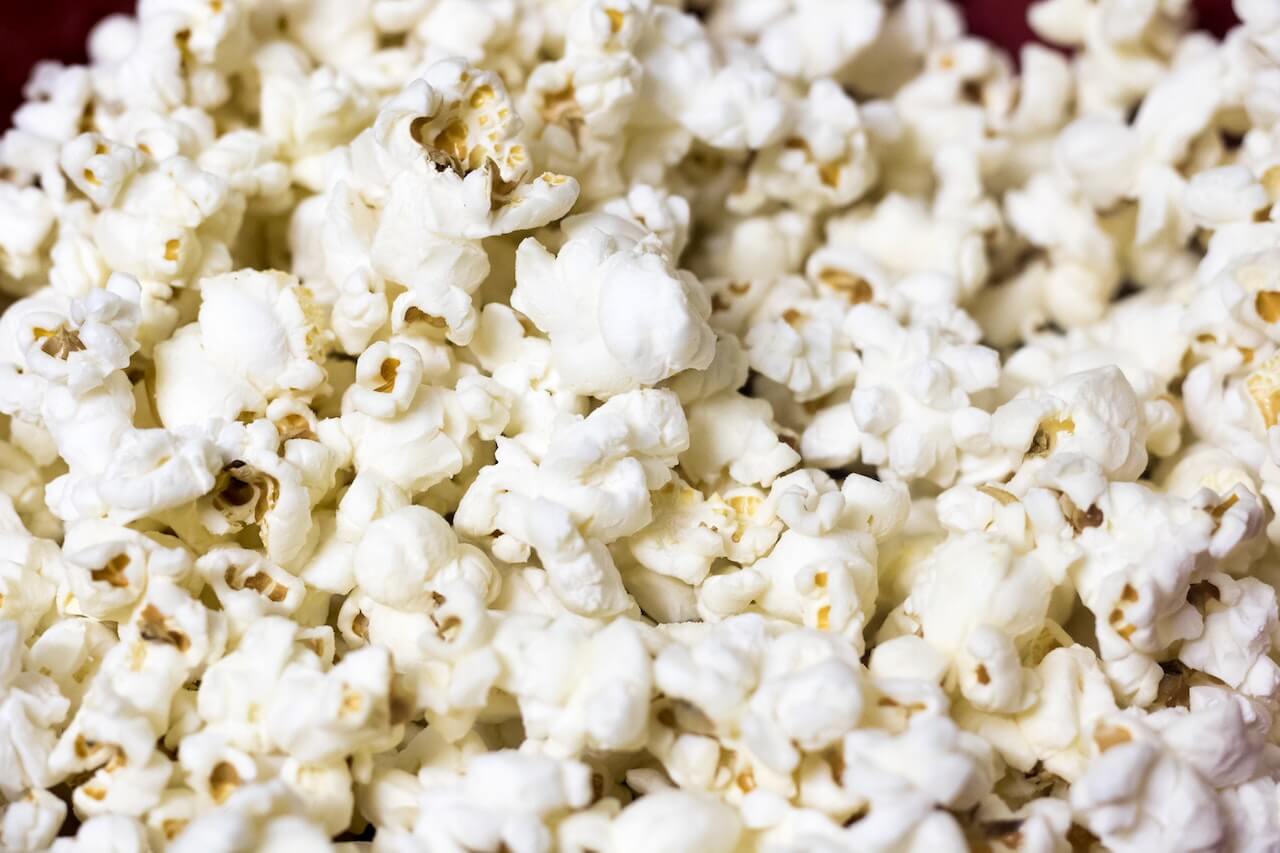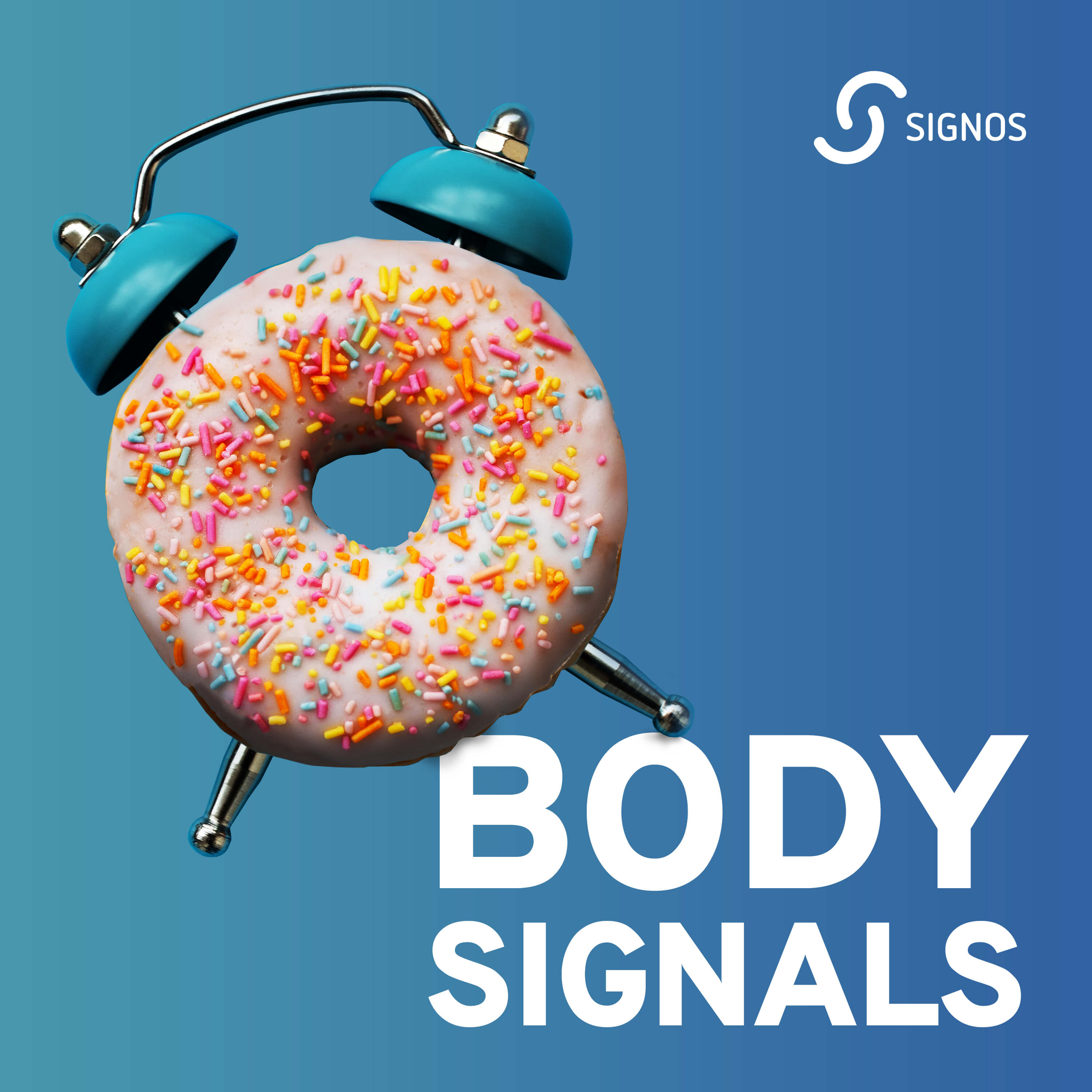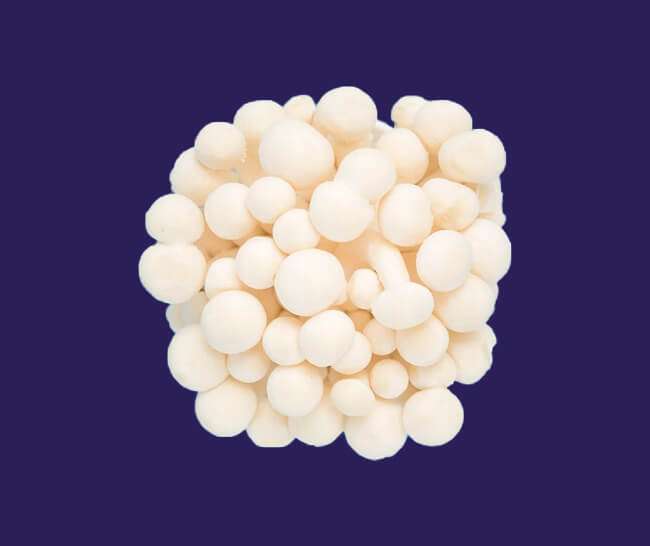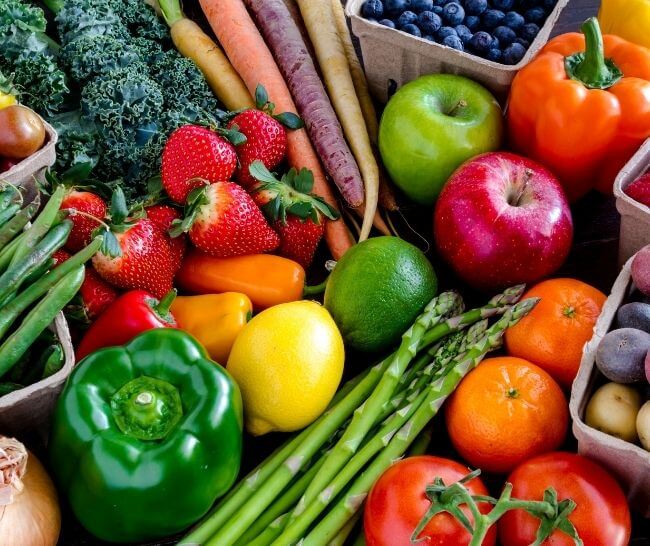The glycemic index of foods can help us understand how different foods can affect blood sugar and overall health.
The glycemic index (GI) is a system that ranks carbohydrate-containing foods based on how quickly they raise blood glucose levels. Foods with a high GI lead to rapid spikes in blood sugar, while those with a low GI cause a more gradual and sustained release of glucose into the bloodstream.1
In this article, you’ll learn about the glycemic index and nutritional benefits of the popular and tasty snack popcorn. Let’s dive into how popcorn impacts blood sugar and explore ways to reduce the impact.
{{mid-cta}}
Popcorn Nutrition Facts
Popcorn is not only a tasty and convenient snack but also a surprisingly nutritious one. Bursting with essential nutrients, vitamins, and beneficial compounds, popcorn makes for a delicious and nutritious treat.
Macronutrients
Popcorn is primarily made of carbohydrates, making it a rich energy source. It has a small amount of protein and is relatively low in fat, making it a healthier alternative to many other snacks.
Fiber
We all know how important whole grains are for overall health and well-being, so you’ll be happy to know that popcorn can help you increase your whole grain intake. Whole grains are packed with fiber, and one of the standout nutrients of popcorn is its high fiber content. Consuming fiber promotes healthy digestion, increases feelings of fullness, and supports gut health.
Vitamins
Popcorn also contains beta-carotene, a precursor to Vitamin A, which plays a crucial role in maintaining healthy vision and immune function. The crunchy snack is also a good source of Vitamin B vitamins, including B6, pantothenic acid, and niacin. These essential vitamins involve various metabolic processes, including protein metabolism, neurotransmitter synthesis, and skin health.
This tasty treat packs several phytochemicals like polyphenols, including antioxidants like ferulic acid. These compounds help combat oxidative stress and inflammation in the body.2
The nutritional content of popcorn can vary slightly depending on the preparation method and any added ingredients, such as butter, salt, or sugar.
Incorporating popcorn into a balanced diet can be a flavorful way to boost nutrient intake and support overall health.
Is Popcorn Low Glycemic? Deep Diving into Popcorn GI
The glycemic index value of popcorn can vary depending on the type of popcorn, how it’s prepared, and any toppings or seasonings added.
Glycemic index values are divided into three categories:
1 to 55: Low glycemic index
56 to 69: Moderate glycemic index
70 to 100: High glycemic index
Corn itself has a low GI value of 52. When air-popped, plain popcorn's GI is considered low to moderate. Air-popped popcorn has a GI value around 55 to 65, depending on type and preparation method.1
The presence of whole grains and fiber slows down the digestion and absorption of carbohydrates, resulting in a more controlled increase in blood sugar levels.

Let's dive into some common ways to prepare popcorn and their potential impact on the glycemic index:
Glycemic Index of Popcorn with Olive Oil
Cooking popcorn with olive oil can reduce the GI value slightly. Fat slows digestion and the absorption of carbohydrates, resulting in a slower and more gradual increase in blood sugar.
Cooking with olive oil has other health benefits as well. Olive oil is a good source of monounsaturated fatty acids, which can help reduce LDL cholesterol levels and lower the risk of heart disease and stroke.3
Olive oil also contains antioxidants and anti-inflammatory compounds, such as polyphenols, which can help combat oxidative stress and inflammation in the body.4
Some vitamins, like A, D, E, and K, are fat-soluble, meaning the body needs dietary fats for optimal absorption. Cooking popcorn with a small amount of olive oil may enhance the absorption of these fat-soluble vitamins in the snack.
Glycemic Index of Popcorn with Butter
The GI of popcorn may also be decreased by preparing it with butter. The GI of butter is 14, making it a low-GI food. Adding fat to carbohydrates slows digestion and prevents blood sugar spikes, reducing the GI value of combined foods.
Unlike olive oil, butter is high in saturated fat. Consuming too much saturated fat can cause abnormal blood cholesterol levels and increase the risk of heart disease.5
While butter may decrease the glycemic index of popcorn, consuming butter too often and in large amounts may cause abnormal blood lipid levels. Buttered popcorn is best consumed in moderation as part of a balanced, nutrient-dense diet.
Glycemic Load of Popcorn
Glycemic load (GL) is a concept closely related to the Glycemic Index (GI) but takes into account both the quality (GI) and quantity of carbohydrates in a specific food serving. While the GI measures how quickly a food raises blood sugar levels, the glycemic load considers the number of carbohydrates consumed in a serving.
A low glycemic load is generally considered ten or less, a medium glycemic load falls between 11 to 19, and a high glycemic load is 20 or higher.
With a glycemic load of 3.3, popcorn falls well within the low category, meaning that it has a minimal impact on blood sugar levels when a modest serving size is eaten. This makes popcorn suitable for individuals looking to manage their blood sugar levels and maintain a balanced diet.
Popcorn and Blood Sugar: Does Popcorn Raise Blood Sugar?
Like any other food with carbohydrates, popcorn can raise blood sugar levels. Its impact on blood sugar depends on the serving size, how it’s prepared, and any additional toppings or ingredients added.
Plain air-popped popcorn has a modest impact on blood sugar levels compared to high-GI foods.
One to three cups of plain air-popped popcorn is a good serving size to eat at one time. To manage blood sugar levels and prevent blood sugar spikes, avoid eating portions larger than three cups in one sitting.
When consumed in moderate portions and without added sugar or saturated fat, popcorn can be a healthy option for people living with blood sugar-related health conditions, such as type 2 diabetes or insulin resistance.
Tips to Reduce the Glycemic Index of Popcorn
- Make air-popped or stove-topped popcorn
Opt for air-popped or stove-popped popcorn instead of microwave popcorn. Air-popping eliminates the use of ingredients that may increase the GI value.
- Control the amount per serving
Be mindful of portion sizes. Consuming a reasonable amount of popcorn per serving can help prevent large spikes in blood sugar levels and keep the overall glycemic impact in check.
- Use healthy toppings
Choose nutritious and low-GI toppings instead of sugar or butter. Add spices like cinnamon or nutritional yeast for flavor or a sprinkle of heart-healthy nuts and seeds to enhance nutritional value without significantly affecting the GI.
- Pair with Protein or Healthy Fats
Eat popcorn with protein or healthy fats to slow the digestion and absorption of carbs even more. Consider pairing popcorn with a handful of almonds or a serving of Greek yogurt for a more balanced snack.
Ideal Serving of Popcorn
The ideal serving of popcorn can vary depending on individual nutrition needs, health conditions, and health goals.
The American Diabetes Association (ADA) recommends one cup of popcorn with less than five carbohydrates as a great snack. Even having three cups of popcorn is still a reasonable choice, providing roughly 10 to 20 grams of carbohydrates.6

6 Benefits of Popcorn You Didn’t Know About
- A natural whole-grain food that contains dietary fiber
Popcorn is a whole-grain food that retains its bran, germ, and endosperm, providing valuable nutrients often lost in processing. It is an excellent source of dietary fiber, which supports digestive health and healthy blood sugar levels, promotes satiety, and helps regulate bowel movements.
- Packed with powerful antioxidants, vitamins, minerals, and phytochemicals
Popcorn contains various antioxidants, including polyphenols like ferulic acid, which help combat oxidative stress and inflammation. It also provides essential vitamins like B-6, pantothenic acid, niacin, and Vitamin A, contributing to overall health and immune function.
- Popcorn has about 8 percent of the daily value of iron
With about 8 percent of the daily value of iron per serving, popcorn can contribute to maintaining healthy blood cells and may help prevent iron deficiency anemia.
- A good source of calcium, copper, magnesium, and zinc
Popcorn contains various essential minerals that are needed for an optimally functioning body.
- A healthy snack to manage blood sugar levels
Popcorn's low glycemic index and low glycemic load make it a good choice for health-conscious people who want to manage their blood sugar levels. It allows for a gradual rise in blood glucose, promoting better blood sugar control.
- Air-popped corn is also low-fat and low-calorie
Air-popped popcorn is a satisfying snack for those concerned with health and weight management because it is low in fat and calories.
- Gluten-Free and Versatile
Popcorn is naturally gluten-free, so it’s a safe alternative for individuals with gluten sensitivities or celiac disease. It’s customizable and can be enjoyed, salty or sweet. Brown rice and quinoa are other naturally gluten-free foods high in fiber and good for managing blood sugar.
How to Make Healthy Popcorn at Home
Making healthy popcorn at home is simple and allows you to control the ingredients. Here are some tips and ideas for preparing healthy popcorn in the comfort of your own home:
Air-Popped Popcorn
The healthiest way to prepare popcorn is by air-popping whole kernels at home. This method doesn't require added oils or fats, resulting in a low-calorie snack.
Stovetop Popping
If you prefer stovetop popping, use a small amount of heart-healthy olive oil. Coat the bottom of the pan lightly to prevent sticking.
Nutritional Yeast
Sprinkle nutritional yeast over the freshly popped popcorn for a savory and cheesy flavor. Nutritional yeast is a good source of B vitamins and provides a cheese-like taste without added fats.
Spices and Herbs
Experiment with different spices and herbs to enhance the flavor. Try options like paprika, garlic powder, cinnamon with stevia, cayenne pepper, or a mix of Italian herbs for added variety.
Olive Oil and Herbs
Drizzle a small amount of extra virgin olive oil over the popcorn and add dried herbs like rosemary or thyme for a Mediterranean-inspired taste.
Parmesan Cheese
Sprinkle a small amount of grated parmesan cheese for a savory and tangy flavor. Remember to limit the amount you use to avoid adding too much fat or calories.
The key to making healthy popcorn at home is making mindful choices about how you prepare it and what you add to it. Enjoy popcorn as part of a balanced diet, incorporating it alongside other nutrient-dense foods for a satisfying high-fiber treat.
Learn More About Glycemic Index and How to Improve Blood Sugar Health with Signos’ Expert Advice
Understanding how different foods impact blood sugar can help improve overall health and well-being. Knowing the glycemic index of foods, you can make informed decisions about what foods to eat and how much to manage blood sugar and support your health.
Signos CGM empowers you to improve your health by keeping track of your diet, exercise, sleep habits, and blood sugar. Knowledge is power, and a CGM can give you specific information about how your habits affect your health.
Find out if Signos is a good fit for you by taking a quick quiz.
- Item 1
- Item 2
- item 3
Topics discussed in this article:
References
- Atkinson, F. S., Foster-Powell, K., & Brand-Miller, J. C. (2008). International tables of glycemic index and glycemic load values: 2008. Diabetes care, 31(12), 2281–2283. https://doi.org/10.2337/dc08-1239
- Coco, M. G., Jr, & Vinson, J. A. (2019). Analysis of Popcorn (Zea mays L. var. everta) for Antioxidant Capacity and Total Phenolic Content. Antioxidants (Basel, Switzerland), 8(1), 22. https://doi.org/10.3390/antiox8010022
- Guasch-Ferré, M., Hu, F. B., Martínez-González, M. A., Fitó, M., Bulló, M., Estruch, R., Ros, E., Corella, D., Recondo, J., Gómez-Gracia, E., Fiol, M., Lapetra, J., Serra-Majem, L., Muñoz, M. A., Pintó, X., Lamuela-Raventós, R. M., Basora, J., Buil-Cosiales, P., Sorlí, J. V., Ruiz-Gutiérrez, V., … Salas-Salvadó, J. (2014). Olive oil intake and risk of cardiovascular disease and mortality in the PREDIMED Study. BMC medicine, 12, 78. https://doi.org/10.1186/1741-7015-12-78
- Sarapis, K., George, E. S., Marx, W., Mayr, H. L., Willcox, J., Esmaili, T., Powell, K. L., Folasire, O. S., Lohning, A. E., Garg, M., Thomas, C. J., Itsiopoulos, C., & Moschonis, G. (2022). Extra virgin olive oil high in polyphenols improves antioxidant status in adults: a double-blind, randomized, controlled, cross-over study (OLIVAUS). European journal of nutrition, 61(2), 1073–1086. https://doi.org/10.1007/s00394-021-02712-y
- Khaw, K. T., Sharp, S. J., Finikarides, L., Afzal, I., Lentjes, M., Luben, R., & Forouhi, N. G. (2018). Randomised trial of coconut oil, olive oil or butter on blood lipids and other cardiovascular risk factors in healthy men and women. BMJ open, 8(3), e020167. https://doi.org/10.1136/bmjopen-2017-020167
- Daly, A. (2008). Choose your foods: exchange lists for weight management. Alexandria, Va.: Chicago, Ill., American Diabetes Association.































